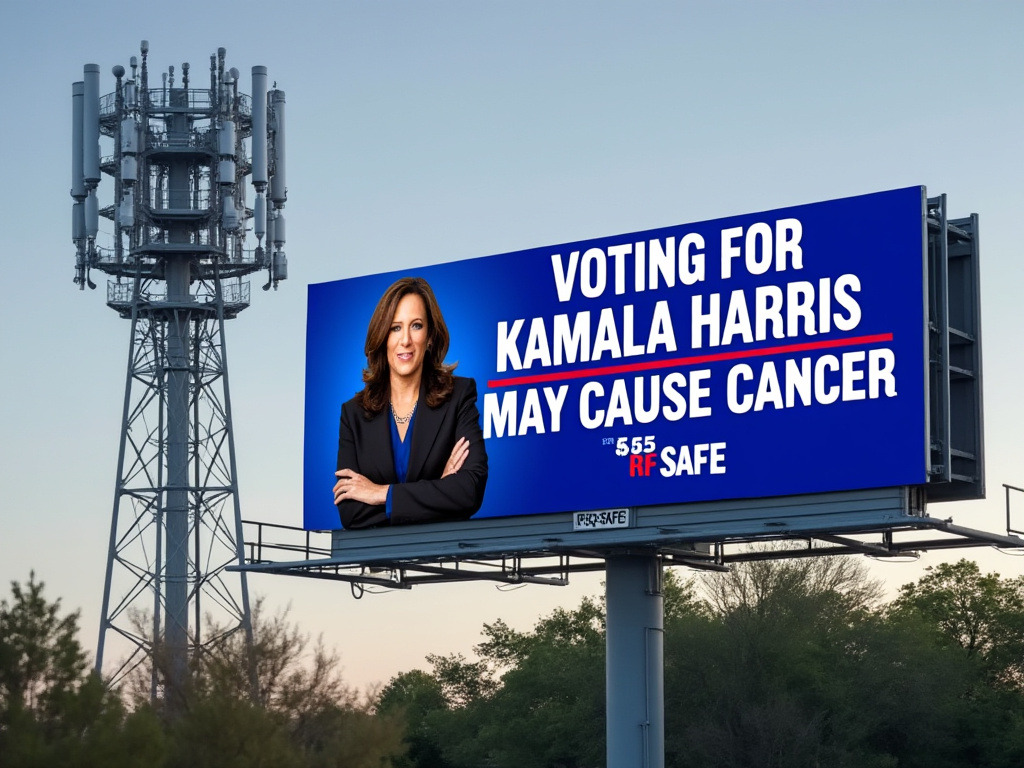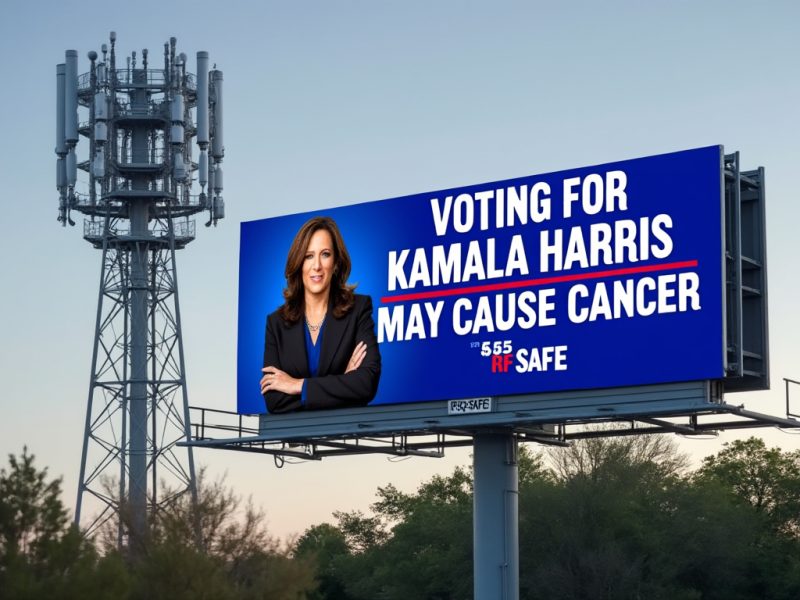As we stand at a critical juncture in public health, it’s time to confront a pressing issue that has been overshadowed by other environmental concerns: the misclassification of radiofrequency (RF) radiation risks. Recent studies and legal actions have shifted the conversation from scientific uncertainty to policy failure, highlighting the urgent need for regulatory reform. This issue transcends political affiliations and demands immediate attention, arguably surpassing even global warming in its potential impact on human health.
In an age dominated by wireless technology, we are constantly exposed to RF radiation from cell phones, Wi-Fi networks, and an ever-growing array of smart devices. For years, the potential health risks associated with this exposure have been a subject of scientific debate. However, recent landmark studies and lawsuits have provided compelling evidence that RF radiation poses significant health risks, including cancer and neurological disorders.
Despite this evidence, policy changes have lagged, allowing outdated safety guidelines to remain in place. This failure to act is not just a scientific oversight but a policy crisis fueled by corporate influence over regulatory bodies. It’s time to recognize that the debate is no longer about science—it’s about policy, accountability, and the health of future generations.
The Misclassification of RF Radiation Risks
A Greater Threat Than Global Warming?
While global warming is a well-recognized environmental crisis, the risks posed by RF radiation may be even more immediate and pervasive. Unlike climate change, which is being actively addressed through international agreements and policy initiatives, the health risks associated with RF radiation have been largely ignored by policymakers.
Key Points:
- Ubiquity of Exposure: The widespread use of wireless technology means that virtually everyone is exposed to RF radiation daily.
- Invisible Threat: RF radiation is an unseen hazard, making it easier for the public and policymakers to overlook.
- Lack of Regulatory Action: Despite mounting evidence, regulatory agencies have failed to update safety guidelines, leaving the public unprotected.
Landmark Studies Settling the Debate
National Toxicology Program (NTP) Study
Overview:
- Agency: U.S. National Toxicology Program
- Duration: Over 10 years
- Investment: $30 million
- Subjects: Thousands of rats and mice exposed to RF radiation similar to that emitted by cell phones
Key Findings:
- Clear Evidence of Cancer: Increased incidences of malignant schwannomas of the heart and gliomas in the brain.
- DNA Damage: Observed in brain cells, suggesting a mechanism for cancer development.
- Non-Thermal Effects: Health impacts occurred without significant tissue heating, challenging existing safety guidelines focused solely on thermal effects.
Ramazzini Institute Study
Overview:
- Organization: Ramazzini Institute, Italy
- Exposure Levels: Significantly lower than the NTP study, comparable to environmental exposure from cell towers
- Subjects: Rats exposed to RF radiation over their lifetimes
Key Findings:
- Consistent Results with NTP Study: Increased incidence of the same types of tumors.
- Environmental Relevance: Demonstrates risks at exposure levels deemed safe by current standards.
The Legal Battle: A Shift from Science to Policy
Court Rulings Highlighting Regulatory Failures
In 2021, the U.S. Court of Appeals for the District of Columbia Circuit ruled that the Federal Communications Commission (FCC) had failed to provide a reasoned explanation for its determination that its existing guidelines adequately protect against harmful effects of RF radiation. The court cited the FCC’s lack of response to evidence of non-thermal biological effects.
Implications:
- Regulatory Negligence: The ruling underscores the FCC’s failure to update safety guidelines despite scientific evidence.
- Policy Over Science: Highlights how policy inertia, rather than scientific uncertainty, is now the barrier to protecting public health.
Corporate Influence and Regulatory Capture
The Role of the FCC
Tom Wheeler’s Tenure:
- Background: Former head of the Wireless Communications Industry Association (CTIA)
- Position: FCC Chairman (2013-2017)
- Actions: Under his leadership, the FCC did not update RF safety guidelines, which remain based on science from the 1990s.
Impact of Regulatory Capture:
- Conflict of Interest: Industry insiders in regulatory positions can prioritize corporate interests over public health.
- Policy Stagnation: Failure to act on new scientific evidence due to corporate influence.
The Political Dimension: Are Voters Unwitting Hostages?
Stockholm Syndrome in the Electorate?
Some argue that voters, particularly those suffering from health issues potentially linked to RF radiation, continue to support politicians who have failed to address these risks. This phenomenon is likened to Stockholm Syndrome, where hostages develop an affinity for their captors.
Case in Point:
- Cancer Victims Voting Against Their Interests: By supporting politicians who prioritize corporate interests, voters may be inadvertently endorsing policies that contribute to public health risks.
Candidates’ Stances on RF Radiation Risks
Kamala Harris
- Current Position: Vice President of the United States
- Criticism:
- Inaction on RF Safety Guidelines: The Biden-Harris administration has not updated outdated FCC safety standards.
- Halting of NTP Research: Under their leadership, funding for critical RF radiation research was halted.
- Implications: Continued exposure of the public to potential health risks without adequate protection.
Robert F. Kennedy Jr.
- Advocacy:
- Legal Action Against FCC: Successfully sued the FCC for failing to update safety guidelines.
- Public Awareness: Actively raises awareness about the health risks of RF radiation.
- Policy Proposals:
- Updating Safety Standards: Calls for guidelines that reflect current scientific understanding.
- Restoring Research Funding: Advocates for continued investigation into RF radiation health effects.
Donald Trump
- Shift in Stance:
- Acknowledgment of Past Oversights: Recognizes the need for better RF radiation safety measures.
- Commitment to Action: Pledges to restore NTP research funding and overhaul the FCC.
- Implications: Potential for bipartisan support to address RF radiation risks.
The Misclassification of RF Radiation Risks
Beyond Thermal Effects
Current safety guidelines focus solely on the thermal effects of RF radiation, ignoring non-thermal biological impacts that studies have repeatedly shown can have serious health consequences.
Consequences of Misclassification:
- Public Health Risks: Increased exposure to RF radiation without adequate safety measures.
- Stifled Medical Research: Underestimation of risks hampers funding for studies and exploration of mitigation strategies.
- Environmental Impact: Unchecked proliferation of wireless technology could have unforeseen ecological consequences.
The Way Forward: Policy Changes Needed
Updating Safety Guidelines
- Incorporate Non-Thermal Effects: Revise standards to reflect current scientific evidence of biological impacts.
- Protect Vulnerable Populations: Special consideration for children and pregnant women.
Restoring and Supporting Research
- Reinstate NTP Funding: Resume critical studies on RF radiation health effects.
- Encourage Independent Research: Reduce corporate influence on scientific investigations.
Combating Regulatory Capture
- Transparency Measures: Ensure regulatory agencies operate without undue industry influence.
- Accountability: Hold policymakers responsible for protecting public health.
Conclusion
The debate over the health risks of RF radiation is no longer a scientific one—it’s a policy crisis that demands immediate action. The misclassification of RF radiation risks has allowed for the unchecked expansion of wireless technology without proper safety measures, posing a greater threat than other environmental issues like global warming.
As voters, it’s crucial to be informed about where candidates stand on this issue. Supporting leaders who prioritize public health over corporate profits is the first step toward breaking free from policies that endanger our well-being.
Call to Action
- Educate Yourself and Others: Share credible information about RF radiation risks.
- Engage with Policymakers: Demand that elected officials update safety guidelines and restore research funding.
- Vote with Health in Mind: Choose candidates committed to protecting public health over corporate interests.
References
- National Toxicology Program (NTP). (2018). Toxicology and Carcinogenesis Studies of Cell Phone Radiofrequency Radiation. Retrieved from NTP Website
- Falcioni, L., et al. (2018). Report of Final Results Regarding Brain and Heart Tumors in Sprague-Dawley Rats Exposed to Mobile Phone Radiofrequency Field. Environmental Research, 165, 496-503.
- United States Court of Appeals for the District of Columbia Circuit. (2021). Environmental Health Trust et al. v. FCC. Case No. 20-1025.
- Hardell, L., & Carlberg, M. (2015). Mobile Phone and Cordless Phone Use and the Risk for Glioma. Pathophysiology, 22(1), 1-13.
- TheraBionic GmbH. TheraBionic P1: Innovative Cancer Therapy. Retrieved from TheraBionic Website
Frequently Asked Questions (FAQs)
1. Is RF radiation from cell phones and wireless devices harmful?
Recent studies, including those by the National Toxicology Program and the Ramazzini Institute, have shown that prolonged exposure to RF radiation can lead to cancer and other health issues, even at levels considered safe by current guidelines.
2. Why haven’t safety guidelines been updated?
Regulatory agencies like the FCC have been criticized for failing to update safety guidelines due to corporate influence and reliance on outdated science that focuses only on thermal effects of RF radiation.
3. What can I do to protect myself and my family?
- Use wired connections when possible.
- Limit cell phone use and keep devices away from your body.
- Use speakerphone or headphones to minimize direct exposure.
4. How can I advocate for change?
- Contact your elected officials to express your concerns.
- Support organizations and candidates that prioritize public health.
- Share information to raise awareness about the issue.
5. Is this issue more important than global warming?
While both are critical environmental concerns, the immediate and pervasive nature of RF radiation exposure, coupled with the lack of regulatory action, makes it an urgent public health crisis that demands immediate attention.









